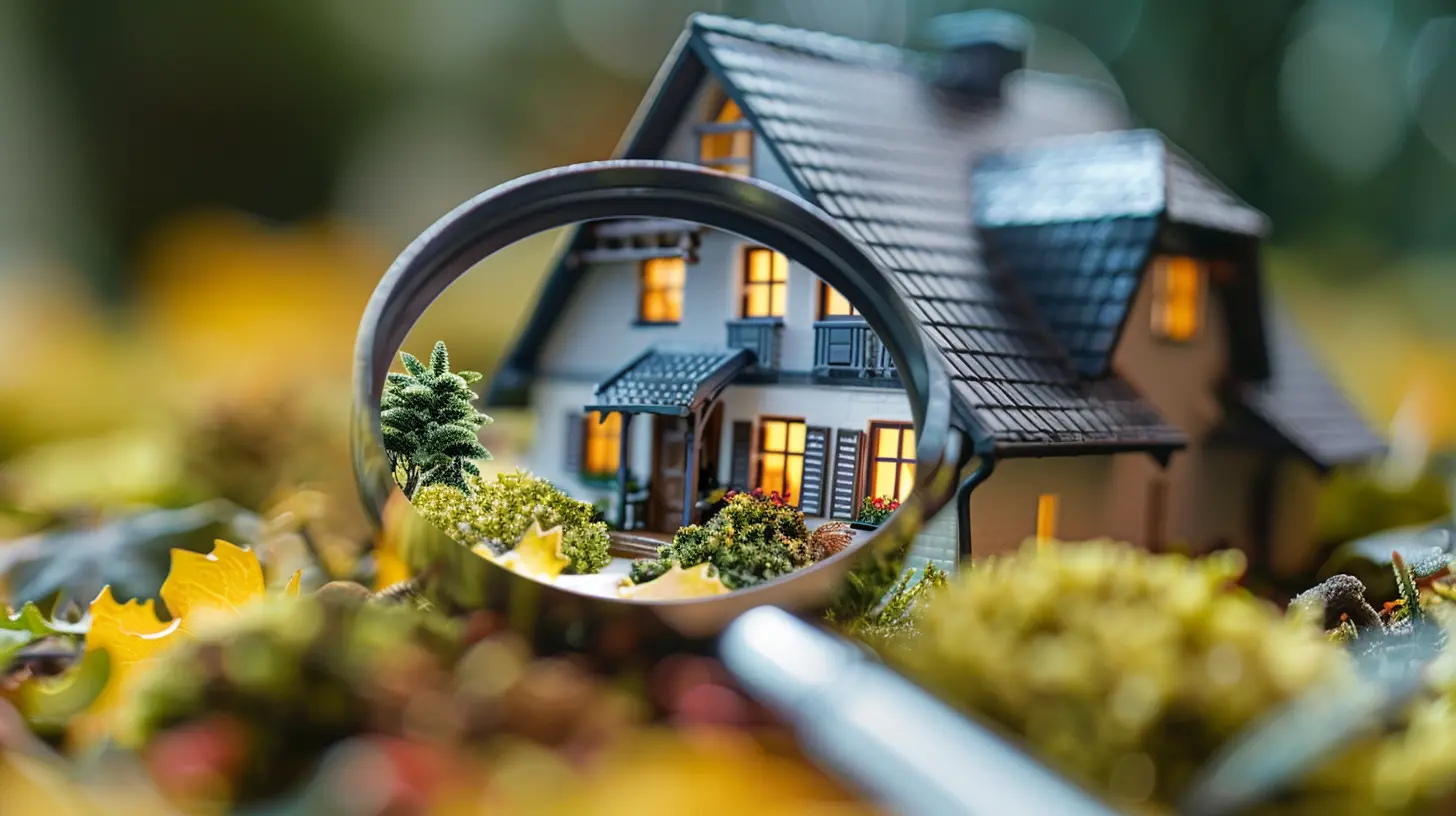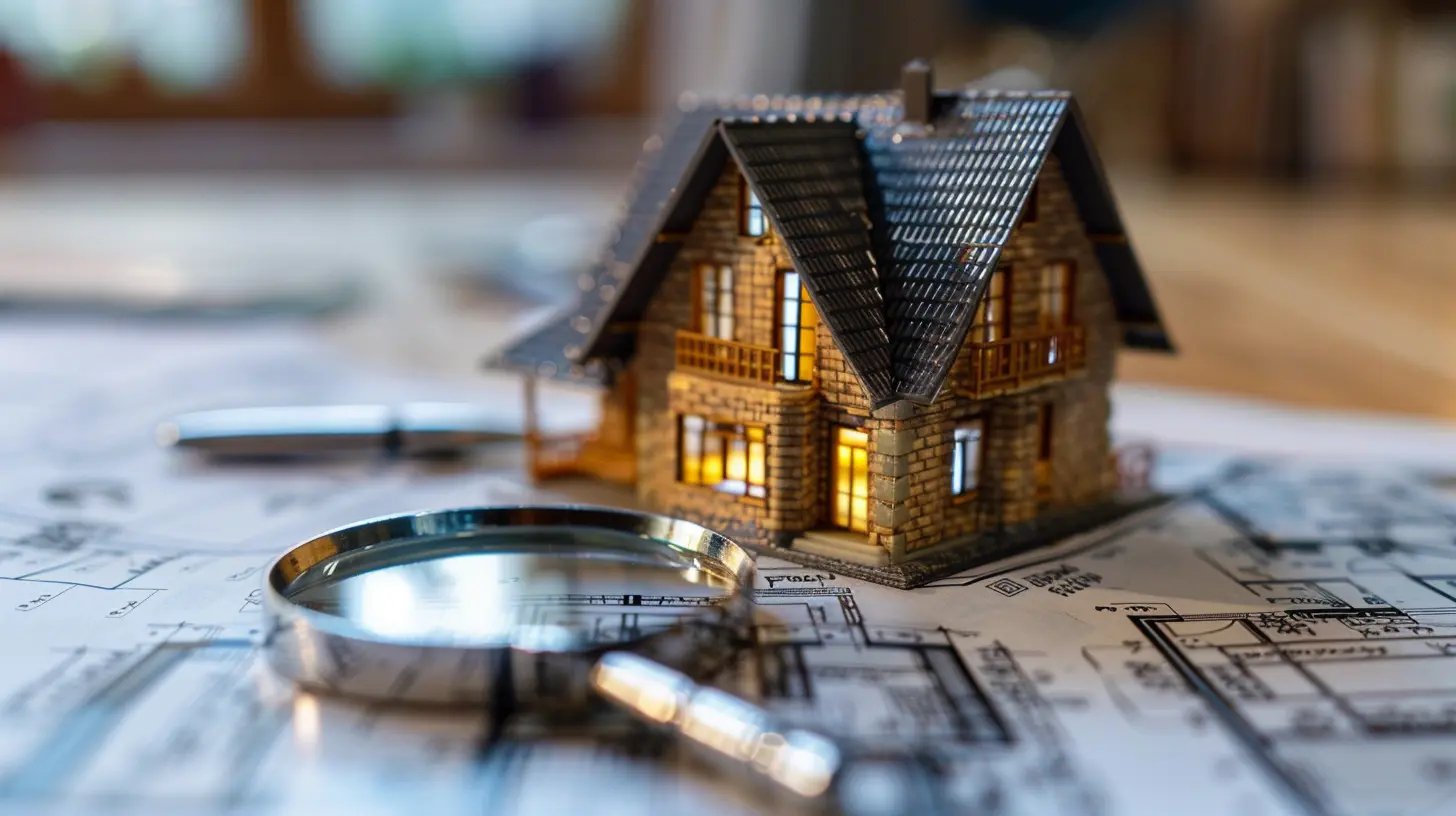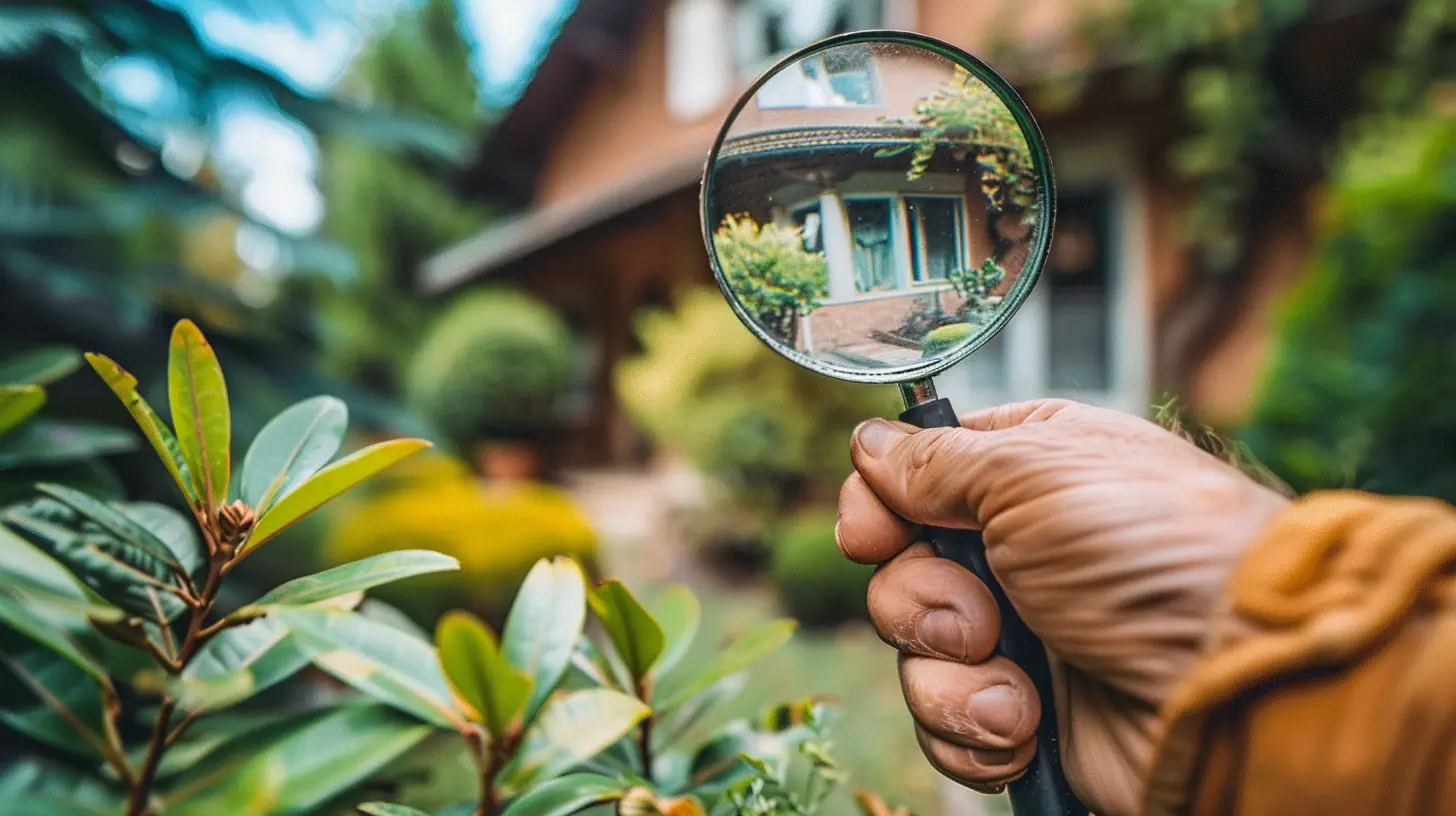Hidden Costs to Look Out for When House Hunting
5 October 2025
Let’s be honest — house hunting sounds like an adventure, right? You’ve probably spent hours scrolling through listings, saved your dream homes (yes, even the one with the slide in the living room), and maybe even imagined where your dog’s bed will go. It’s fun, exciting, and a little overwhelming. But there’s something a lot of people don’t talk about when venturing into the home-buying jungle: the sneaky gremlins lurking behind the price tag — aka the hidden costs.
Today, we're lifting the curtain on these stealthy wallet-nibblers. Because the last thing you want is to fall in love with a home only to have your budget blindsided by surprise expenses. So, grab your coffee and let's have a real talk about the hidden costs to look out for when house hunting!
You Found "The One"—Now Let’s Talk Money (The Real Kind)
When you start house hunting, what’s the one number you can’t stop staring at? The listing price, right? That's your budget's North Star — or so it seems. But here's the twist: that number doesn't tell the whole story. Think of it like ordering a burger and then being charged separately for the bun, the patty, the pickles, and even the napkin. Annoying, right?Well, owning a home can work the same way if you're not prepared. Let’s break it down.
1. Closing Costs: The Ultimate Welcome Party Fee 💸
You finally make it to closing day — congrats! But wait, before the keys are officially yours, there’s a little party called closing costs. And spoiler: you’re footing the bill.What are they?
Closing costs are all the fees tied to finalizing the sale — think loan origination fees, title insurance, appraisal costs, attorney fees, and more.
How much?
Typically, they range from about 2% to 5% of the home’s purchase price. So, for a $300,000 home, that’s an extra $6,000 to $15,000.
Tip: Some crafty buyers negotiate with sellers to cover some of these costs. It doesn’t always fly, but hey — it’s worth a shot!
2. Home Inspection: Your Preemptive Strike Against Money Pits 🔍
Skipping a home inspection to speed things up? Stop right there, friend. That’s like marrying someone without ever asking about their favorite pizza topping — risky business.Why it's essential:
A home inspection uncovers what’s lurking beneath the surface — from faulty wiring to a roof that’s one gust of wind away from flying off.
Cost?
Usually $300 to $600, depending on the home’s size and location. And worth every penny — trust me.
Remember: Some issues revealed in inspections (like mold or foundation cracks) could cost you thousands later. Better to know now and negotiate.
3. Property Taxes: The Forever Fee 🏛️
Ah, property taxes — the gift that keeps on giving. Every year. Forever.What you need to know:
They vary wildly depending on where you live. A $400,000 home in Texas could have triple the annual taxes of a similar home in Colorado.
Pro Tip: Don’t just look at current taxes; find out if a reassessment might be on the horizon. A neighborhood jump in value could mean a tax rocket ride.
4. Homeowners Insurance: Sleep Easier, Pay Monthly 🛏️
You can’t skimp on homeowners insurance — unless you’re cool with trolling GoFundMe when lightning hits your roof.What it covers:
Fire, theft, natural disasters, liability — and depending on your policy, your dog eating the neighbor's prize-winning tulips (kidding... kind of).
Annual cost?
Generally ranges from $600 to $2,000, but it depends on location, home size, and coverage level.
Hidden twist: In some areas (hello, Florida hurricanes or California wildfires), you might need extra insurance for things like floods or earthquakes.
5. Private Mortgage Insurance (PMI): The “Because We Don’t Know You Yet” Fee 🏦
Buying with a down payment of less than 20%? Congrats, you get to meet PMI — the lender's way of saying, “We don’t trust you just yet.”Breakdown:
PMI protects the lender (not you!) in case you default. It’s typically 0.5% to 1.5% of your loan amount annually.
When does it go away?
Usually when you’ve built up 20% equity in your home. Until then, it's just another monthly expense.
Quick math: For a $250,000 loan, PMI could cost you an extra $125–$300 per month.
6. Utility Set-Up & Transfer Costs: Hello Electricity, Goodbye Extra Cash 💡
Utilities don’t magically turn on the moment you get your keys. Most companies charge a deposit, set-up fee, or transfer cost — especially if you're new to the area.Think:
- Electricity
- Natural gas
- Water & sewer
- Internet/cable
Cost estimate: Could range from $200 to $500 upfront or more, depending on services and providers.
Do yourself a favor — call ahead and get an estimate before move-in day. There’s nothing like unpacking in the dark because you forgot to set up power.
7. Repairs and Maintenance: The DIY Plot Twist 🔧
That dreamy "fixer-upper" may come with a charming clawfoot tub — and a leaking pipe underneath it.What most new homeowners learn:
Stuff breaks. Paint fades. Toilets run. And unless your cousin is a plumber, you’ll either spend time watching YouTube tutorials or money hiring professionals.
Annual cost?
Experts recommend budgeting 1% to 3% of your home’s value annually for repairs and maintenance.
For a $300,000 home, that’s $3,000–$9,000 a year — not pocket change.
8. HOA Fees: Not-So-Optional "Extras" 🏘️
Living in a community with common amenities? You might owe monthly HOA (Homeowners Association) fees. Think of it as your resident membership fee to the neighborhood club.What they cover:
Landscaping, pools, security, trash removal, snow plowing, and other communal services.
Cost range?
From $50/month to over $1,000/month for luxury communities.
Heads up: HOAs can also charge special assessments — unexpected costs for major repairs or updates. So it’s not just about the monthly dues.
9. Furniture & Appliances: Empty Rooms Need Stuff 🛋️
You’ve got the house… now you need to fill it. That cute reading nook won’t be so cozy without, you know, a chair.Expenses that sneak up:
- New furniture
- Curtains/blinds
- Rugs
- Light fixtures
- Washer/dryer
- Refrigerator (yep, not all homes come with one)
Ballpark cost? Depends on how much you already own, obviously. But it’s easy to drop $5,000–$10,000 if you’re furnishing from scratch.
Tip: Prioritize. You don’t need the guest room set up on day one... unless you plan on hosting your in-laws next week.
10. Moving Costs: The Literal Heavy Lifting 🚚
Unless you’re bribing friends with pizza and beer, you’ll probably hire movers. And yes, that adds up.Average cost:
- Local moves: $500–$1,500
- Long-distance: $2,000–$5,000 (or more, depending on mileage and weight)
DIY option? You could rent a truck, but don’t forget fuel, time, and back pain aren’t free either.
11. Remodeling & Upgrades: The HGTV Effect 🔨
So, you bought a house with "great bones." Now you’re dreaming of subway tile, granite counters, and a rain shower big enough to host a dance party.Upgrade dreams cost real cash.
Even small updates add up, like:
- Painting: $1,000–$3,000
- New floors: $5,000+
- Kitchen reno: $15,000–$50,000 (yes, kitchens are pricey)
Pro-Tip: Plan to live with the “meh” aesthetics for a while. Prioritize safety issues (like outdated electrical), then tackle the pretty stuff later.
12. Time Off Work: The Sneaky Salary Drop ⏰
This one’s rarely mentioned, but super real. Between inspections, paperwork, moving day, and setup, you might need to take time off work.Unpaid time = lost money.
Especially true if you’re a freelancer or work hourly. It’s not a massive cost, but one to think about.
Quick Recap: The Sneaky Sidekicks of the Sticker Price
| Hidden Cost | Approximate Range ||--------------------------|------------------------------------------|
| Closing Costs | 2–5% of purchase price |
| Home Inspection | $300–$600 |
| Property Taxes | Varies wildly by area |
| Homeowners Insurance | $600–$2,000 annually |
| PMI | 0.5–1.5% of loan amount annually |
| Utility Set-Up | $200–$500+ upfront |
| Repairs & Maintenance | 1–3% of home value annually |
| HOA Fees | $50–$1,000+/month |
| Furniture & Appliances | $5,000–$10,000+ |
| Moving Costs | $500–$5,000+ |
| Remodeling Upgrades | $1,000–$50,000+ |
| Time Off Work | Variable depending on your job |
Final Thoughts: Budget Smarter, Not Harder 💡
Buying a home doesn’t have to feel like you’re playing financial whack-a-mole. With a bit of prep, a pinch of planning, and maybe a color-coded spreadsheet or two (hey, no judgment!), you can avoid most of these hidden costs sneaking up on you.Remember, your dream home isn’t just about square footage and shiplap — it’s about financial peace of mind. So build a buffer, ask the awkward questions, and don’t let the hidden costs turn your big move into a big mess.
And hey — if your dream home comes with a built-in slide, just budget for the padding you’ll need after all those fun tumbles.
all images in this post were generated using AI tools
Category:
House HuntingAuthor:

Lydia Hodge
Discussion
rate this article
1 comments
Will McGuffin
What a fantastic article! 🌟 House hunting can be so exciting, and knowing about hidden costs makes the journey even smoother. Thanks for sharing these valuable tips to ensure a joyful home-buying experience! 🏡✨
October 5, 2025 at 10:38 AM

Lydia Hodge
Thank you for your kind words! I'm glad you found the tips helpful for a smoother home-buying experience! 🏡✨


